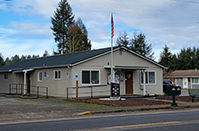Call 911 to report an Emergency – Police, Fire, Ambulance
If an emergency directly affects you, such as an evacuation order – you will be notified by a local authority such as the Linn County Sheriff or by fire personnel , or by an Alert or reverse 9-1-1 call to your home. When appropriate, an evacuation center will be setup at Mari-Linn School. Information regarding the incident, if available, may be obtained at the evacuation center.
To be notified of emergencies in our area or for the latest news:
Sign-up for Alerts METCOM 9-1-1
or Linn Benton ALERT Emergency Notification System
Follow the appropriate Social Media sites such as Facebook:
*Linn County Sheriff
*Oregon Department of Forestry
*Lyons Rural Fire District
*METCOM 9-1-1
Listen to the TV or radio news sources. Or watch for online newspaper articles.
The City of Lyons does have a Facebook page, which we will try our best to provide the most current, reliable information available to us.
OFFICE OF THE STATE FIRE MARSHAL
Prepare for Evacuation: Be Ready, Be Set, Go! Evacuation Preparedness
Educational Webinars: Fire Adapted Oregon
Get Notified: OR-Alert
OREGON EMERGENCY MANAGEMENT: Be 2 Weeks Ready
US DEPT. OF HOMELAND SECURITY
Plan Ahead, Be Informed, Take Action READY.GOV Make A Plan
Advanced Hydrologic Prediction Service
View the N Santiam River water level at Mehama Bridge provided by the National Weather Service.
View interactive map of flood data for the state of Oregon, provided by the National Weather Service.
American Red Cross
City of Lyons Emergency Operations Plan
Lyons Emergency Operations Plan (EOP) March 2015
Earthquakes and Other Natural Hazards in the Pacific Northwest
Oregon Department of Geology and Mineral Industries (DOGAMI) provides educational information regarding earthquakes and other natural hazards.
FEMA Resources to Learn More About Natural Hazards
Ready.gov Prepare For Emergencies
FloodSmart.gov Flood Insurance Information
FEMA – National Flood Insurance Program Update 2024
NFIP Endangered Species Act Integration in Oregon
Smokey Bear Wildfire Information
Linn County Emergency Preparedness
Linn County – Sign up for Alerts
Linn County Emergency Operations Plan
Volunteer locally by joining a Community Emergency Response Team in your area: C.E.R.T
Linn County Community Wildfire Protection Plan
The Linn County Community Wildfire Protection Plan was updated and adopted effective March 26, 2024.
Website: Linn County Community Wildfire Protection Plan
Linn County Community Wildfire Protection Plan, 2024-2029
LC Community Wildfire Prot. Plan Appendices
Linn County Multi-Jurisdictional Natural Hazards Mitigation Plan
for Linn County and the Cities of Halsey, Harrisburg, Lebanon, Lyons, Scio, Sodaville, Tangent, & Waterloo.
The 2017 Linn County Multi-Jurisdictional Natural Hazard Mitigation Plan (NHMP) is currently under review for the 2024 update. This includes updating the Lyons Addendum.
Here is the link to Linn County’s webpage: Linn County Natural Hazard Mitigation Plan
Please complete the survey: Linn County Natural Hazards Survey
2017 Natural Hazard Mitigation Plan
Lyons Addendum to the Linn County NHMP
Summary
The City of Lyons developed an addendum to the Linn County Natural Hazards Mitigation Plan (NHMP) between June and December 2010.
The City’s Addendum received approval from the Federal Emergency Management Agency (FEMA) on June 8, 2011.
Formal approval allows the City to apply for federal disaster mitigation funds (see grant program descriptions below under “Why do we need a Natural Hazard Mitigation Plan?”). Note: Mitigation Plans are non-regulatory in nature, and do not set forth new policy.
What is a Natural Hazards Mitigation Plan?
A natural hazards mitigation plan (NHMP) identifies actions that strengthen a community’s ability to withstand the damaging effects of natural hazards. Mitigation is any sustained action taken to reduce or eliminate the long-term risk to human life and property from natural hazards. Why do we need a Natural Hazard Mitigation Plan? Without a federally and locally approved NHMP, a community is not eligible for the following federal disaster mitigation funds.
- Pre-Disaster Mitigation Grant Program: provides funds to states, territories, Indian tribal governments, communities, and universities for hazard mitigation planning and the implementation of mitigation projects prior to a disaster event. PDM grants are nationally competitive.
- Hazard Mitigation Grant Program: provides grants to state and local governments and other eligible recipients to implement long-term hazard mitigation measures and projects after a major disaster declaration. The purpose of HMGP funds is to reduce the loss of life and property due to natural disasters and to enable mitigation measures to be implemented during the immediate recovery period following a disaster. HMGP funds are available to communities within states that have recently received Presidential Disaster Declarations. HMGP funds are prioritized for communities that are directly affected by a disaster, but communities outside of the disaster declaration are typically eligible as well.
- Flood Mitigation Assistance: assists states and communities in implementing measures that reduce or eliminate the long-term risk of flood damage to buildings, manufactured homes, and other structures insurable under the National Flood Insurance Program.
Note: Although Lyons created an addendum to Linn County’s NHMP, Lyons is eligible to independently apply for federal mitigation grant funds. Both jurisdictions may, however, work together in the application process (if a particular project will benefit both jurisdictions).
Be Prepared for Inclement Weather
It is that time of year again when the North Santiam School District and First Student Transportation review the process and procedure for inclement weather.
On days where the temperatures have dropped and ice or snow is on the roads, bus routes will be checked starting at 4:00 a.m. A decision will be made by 5:00 a.m. by the Superintendent with input from First Student Transportation and the District’s Director of Health and Safety.
There are three things they will look at as they drive the bus routes:
- Road safety at the high and low elevation levels.
- Current temperatures.
- Forecasts for weather worsening with roads that are already unsafe.
From the data they gather, they will decide to:
- Put buses on snow routes.
- Put schools on a two hour delayed start.
- Or, close school for the day.
This year student households will be called using the School Messenger system, with calls starting at 5:30 a.m.If no one answers the phone and the household has a message system, it will leave a message. If not, other places parents can look for information on school delays or closures include the District website located at www.nsantiam.k12.or.us where it will be posted on the main page, and on local news and radio stations listed in the student handbook.
This year parents can also sign up for email and text messages at http://www.flashalert.net/signup.html regarding school closure. Once on the website, parents are asked to add an organization. To do this:
- Choose Portland/Vanc/Salem.
- Select Marion Co. Schools.
- And finally North Santiam School District (Stayton).
Click on “subscribe” and then enter email addresses or cell phone numbers where you want messages to be sent. There is a validation process that must be completed before messages will actually be sent.
As the weather gets colder, parents should prepare a plan for how they will get their children to and from bus stops if busses are on snow routes, and where their children will need to go if school is delayed or closed. In the meantime, drag out the winter caps and scarves and try to find matches for all those extra socks and gloves, cause old man winter is looking over your shoulder.
DEFENSIBLE SPACE GRANT
Santiam Canyon Long Term Recovery Group has a Defensible Space Grant to assist homeowners with wildfire risk reduction.
Defensible Space Grant link email: info@santiamrecovery.org Ph: 503-897-0701





